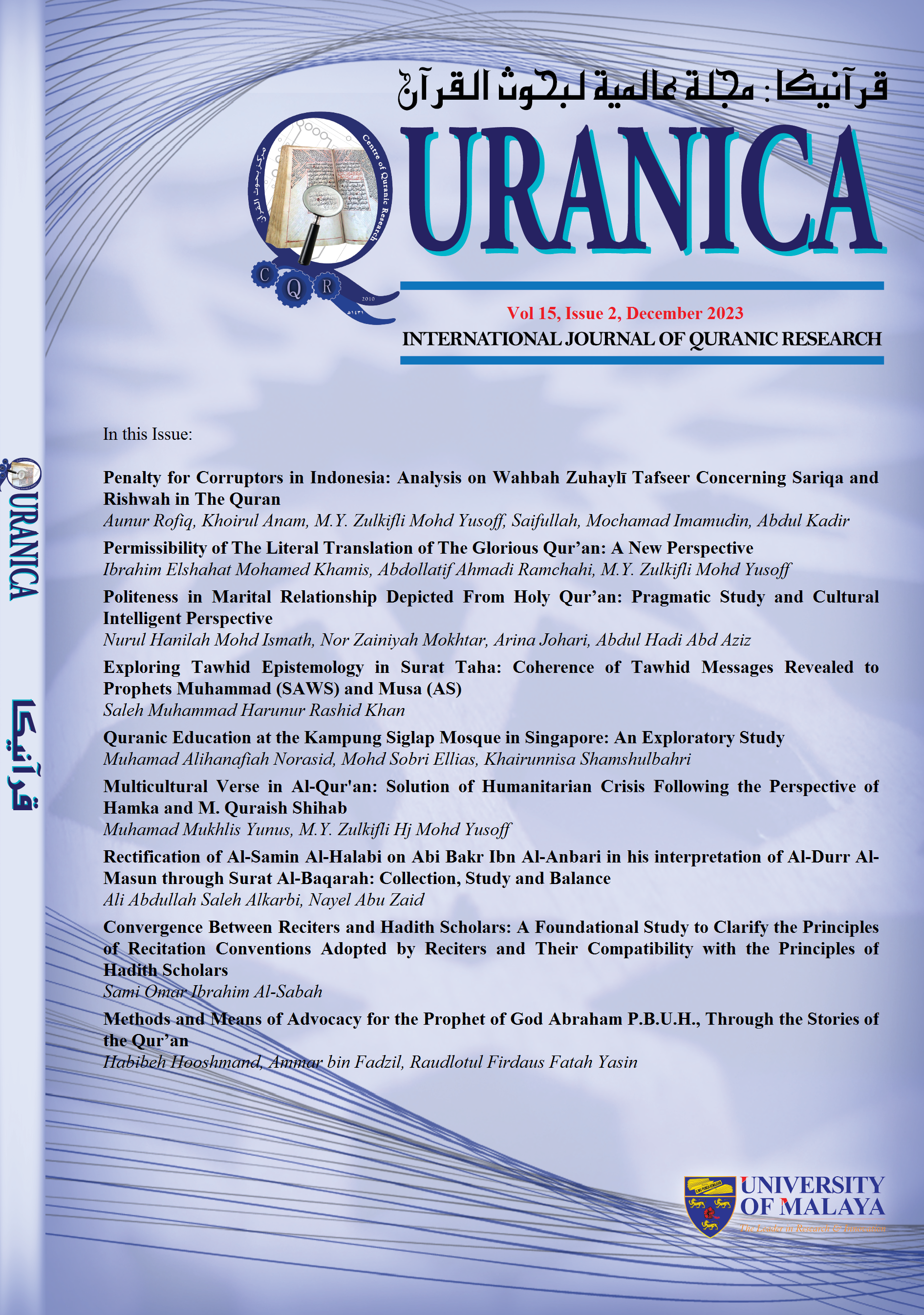Convergence Between Reciters and Hadith Scholars: A Foundational Study to Clarify the Principles of Recitation Conventions Adopted by Reciters and Their Compatibility with the Principles of Hadith Scholars
Main Article Content
Abstract
This study aims to analyze the concept of frequency (tawātur) among readers (qurrā’) and traditionists (muḥaddithūn) and to establish the foundations of the frequencies adopted by readers, comparing them with those of traditionists. The researcher endeavors to collect and examine the meanings of frequency understood by both readers and traditionists, studying and contrasting them to determine the prevailing view with acceptable evidence. This approach highlights the diversity of scholars’ opinions regarding the meaning of frequency and their sincere efforts to approach accuracy, contributing to the enrichment of scientific research in the fields of Quranic readings and comparative exegesis. The research relies on an inductive methodology to trace the origin of the term “frequency” among readers and traditionists. It tracks its evolution, delineates its determinants, and explains the reasons for disparities and nuances in its interpretation. The study comprises five main sections. The researcher concludes that preserving the Islamic faith is closely tied to the emergence of the sciences of hadith and Qur’anic readings, guided by divine providence to scholars and readers to verify and document these disciplines. The study yields several key findings, including the pivotal role of frequency in affirming the authenticity and credibility of sound hadiths and the connected Qur’anic verses to the Prophet Muhammad ﷺ. The conclusion of the study emphasizes the importance of conducting further specialized research and studies on Qur’anic readings and their frequencies.
Downloads
Article Details
Disclaimer
QURANICA makes every effort to ensure the accuracy of all its contents. However, opinions, discussions, views and recommendations are expressed in this journal do not necessarily reflect the official policy of QURANICA or views of its editors or publishers. Therefore, QURANICA and its publishers will not be liable for any controversy may be arisen. The journal reserves the right, at its sole discretion, to change its terms and conditions of publications.
Copyright
It is a condition of publication that manuscript submitted to the journal have not been published, accepted for publication, nor simultaneously submitted for publication elsewhere. By submitting a manuscript, the author(s) agrees that copyright for the article is transferred to the publisher, if and when the manuscript is accepted for publication.
